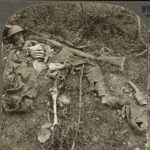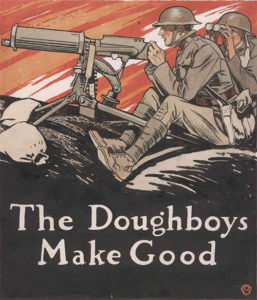
Warfare underwent profound changes from 1914-1918. Although large artillery cannon, machine-guns, submarines, and flying machines were established technologies, the huge numbers of soldiers and weapons employed—and the vastly increased firepower of these weapons—quickly resulted in unprecedented casualties. This battlefield lethality forced armies to dig elaborate trenches for protection. The area between the armies became called:


“I have a rendezvous with Death
At some disputed barricade,…”
~ American poet Alan Seeger, who was killed in 1916 serving in the French Foreign Legion

Deadly snipers, poison gas, flame- throwers, the new tanks, and barbed wire entanglements across blasted, shell-pocked terrain added to the misery suffered by the soldiers who lived in waterlogged underground dugouts with lice and rats.

Allied political and military leaders seemed to have no solutions to break the stalemate in France—while Germany and its ally Austria-Hungary crushed Serbia and Romania, forced civil war-racked Russia to sign a peace treaty, and nearly knocked Italy out of the war.
France’s army mutinied in 1917 after too many failed attacks against German fortified trenches. America’s entry into the war changed Allied despair into hope and then jubilation as U.S. forces helped turn the tide against war-weary Germany, leading to an armistice on 11 November 1918.
THE DOUGHBOYS MAKE GOOD

American soldiers, called “Doughboys,” were enthusiastic but inexperienced, and U.S. Army leaders initially made many mistakes. But in less than six months of fighting the AEF became a successful, powerful armed force that learned vital battlefield lessons America would put to use to win a second world war that started 23 years later.


Industrial Scale Slaughter Banner on View in the Veterans Building Lobby
 |
 |

